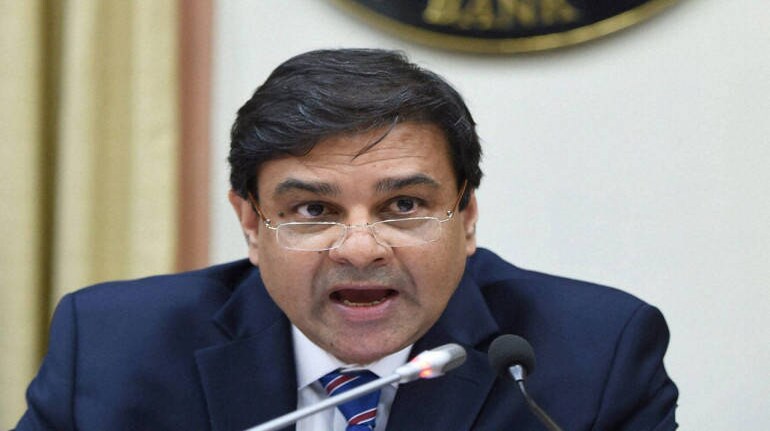



The Reserve Bank of India (RBI) on Wednesday raised concerns over banks not passing on interest rate cuts to borrowers. This is likely to see banks announcing some more rate cuts and borrowers will marginally benefit from lower EMIs (equated monthly installments) of their existing and new loans.
“The experience with the Marginal Cost of Funds Based Lending Rate (MCLR) system introduced in April 2016 for improving the monetary transmission has not been entirely satisfactory, even though it has been an advance over the Base Rate system,” Viral Acharya, Deputy Governor of RBI, said in the third bi-monthly monetary policy conference.
Ravi Kishan Takkar, Chief Executive Officer and Managing Director of public sector lender UCO Bank, said: "Rates are likely to come down with this rate cut as even deposit rates are moving downwards. The full transmission has not come through but a larger part of about 65-70 percent of our loans have moved to the MCLR. The policy is a positive for further transmission of rates."
MCLR calculation for interest rates, for faster transmission of rates, was implemented on loans taken since April 2016. It applies to all new borrowers and is closely linked to bank deposit rates. All new floating rate loans are now linked to MCLR.
Urjit Patel: One Year As RBI Governor
Prior to this, banks lent on base rates. These are the minimum lending rates below which banks do not give loans.
A quick scrutiny of the Base Rate of some banks post the introduction of MCLR suggests that it has moved significantly less than MCLR, and hence RBI said that base rates of banks will also be scrutinised.
"While the extent of change in Base Rate may not necessarily mirror the revision in MCLR, the rigidity of Base Rate is a matter of concern for an efficient transmission of monetary policy to the real economy. Given a large part of the floating rate loan portfolio of banks is still anchored on the Base Rate, the RBI will be exploring various options in the near future to make the Base Rate more responsive to changes in cost of funds of banks," RBI said in its policy statement on Wednesday.
Rate cuts so far
The RBI cut its policy repo rate by 25 basis points (bps) to 6 percent. Repo rate is the rate at which banks borrow from RBI.
Since January 2015 when the easing cycle began, the RBI has cut repo rate by 200 basis points (bps) while banks’ lending rates on fresh rupee loans have declined by about 138 bps, especially on the base rate. One bps is one-hundredth of a percentage point.
Average reduction in MCLR since its inception in April 2016 has been about 92 bps. During the same period, average base rate on fresh loans has been cut by 75 bps, while on outstanding loans, it is even lower at 57 bps.
Soumyajit Niyogi, Associate Director at India Ratings and Research said, "A lot of the reduction could be owing to demonetisation (increase in liquidity). Hence, MCLR has been cut to some extent. But banks will have to protect their margins and hence need to increase their lending, which will require reduction in interest rates further. The RBI rate cut and falling deposit rates will push banks to review their rates because pricing is the only factor that will drive their lending growth for now."
Niyogi said banks with higher capital such as top banks including State Bank of India and Bank of Baroda might look at reducing rates in the coming days.
On Monday, State Bank of India, country's biggest bank, cut its savings deposit rates by 50 bps to 3.5 percent, while its fixed deposit rates have already been reduced to about 6.90 percent.RBI hauls banks
RBI has been consistently reprimanding banks for not doing enough to pass on the full benefit of its rate actions to the borrowers and help revive the slacking private investment for economic growth.
In the April policy statement as well, Governor Urjit Patel had pulled up banks for not transmitting repo rate reductions into lending rates.
Governor Urjit Patel on Wednesday said banks have been selective in their rate cuts in aggressive segments like home and auto loans, but there are many other segments, especially those where borrowers are still tied to the base rate, where they can do more.
Till April this year, about 67 percent of banks’ loans were pegged at base rate.
Patel said, "Given the liquidity conditions prevailing and that we have reduced policy rates by substantial amount since start of easing cycle, I think there is scope for banks to reduce lending rate for those segments. So far, they have not benefited to the full extent of our policy rate cuts."
Acharya said the ongoing resolutions on the bad loans front will also help in better transmission as the banks' balance sheet stress is resolved.
He also announced that the Reserve Bank will be coming out with final guidelines on tri-party repos to deepen the corporate bond market, which, by working as an alternative to the bank lending, will also force banks to tinker with the rates quickly.
The central bank has constituted an internal Study Group to study the various aspects of the MCLR system from the perspective of improving the monetary transmission and exploring linking of the bank lending rates directly to market determined benchmarks.
The group will submit the report by September 24.
Discover the latest Business News, Sensex, and Nifty updates. Obtain Personal Finance insights, tax queries, and expert opinions on Moneycontrol or download the Moneycontrol App to stay updated!
Find the best of Al News in one place, specially curated for you every weekend.
Stay on top of the latest tech trends and biggest startup news.